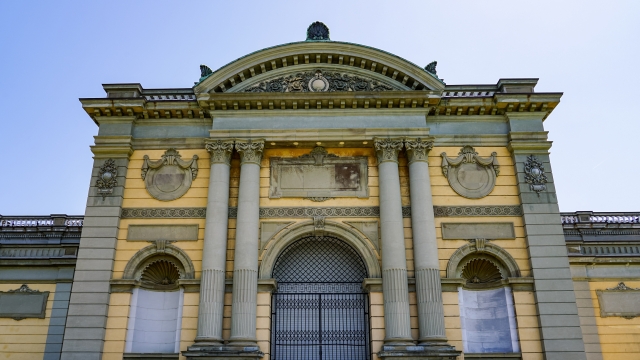About Nara National Museum
Nara attractions, like Japanese history and Buddhist culture can go to see the tickets are not expensive and our country Buddhist statues or a little different. But the most obvious to me is that this side of the museum’s glass made almost with no, indeed, there is a feeling that people want to touch down, before in the Su Bo on the blog does not seem to have this feeling, my husband gave a professional answer about light transmission rate or something,
well ,then there is a museum in the exhibition of Chinese bronze, it seems that a Japanese donated, donated is also China’s unearthed ah, although it is my professional category every day in class to talk about, but I do not know more than those Japanese artifacts, but the heart should not be very careful. Compared to those Japanese cultural relics also understand more, but the heart should be separated, but also did not look closely.

How to get there
From Kintetsu Nara Station, walk east toward Tozaiji-cho and it takes about 15 minutes;
Or take the City Loop Bus (No. 2) from JR Nara Station or Kintetsu Nara Station and get off at Hikariburo Shrine and National Museum.
Fare
Adults 520 yen, college students 260 yen, free admission for those under 18 years old (Tickets are accepted with UnionPay card)
Tips
It looked like they put on a spectacular display here, but during our visit for over a month it was disappointing, but we went to the Titus Museum of Art which is free for foreigners and had a really great display of works by well-known local painters which was great and interesting. We also met some retired senior volunteers who wanted to practice their English, which was fun. They never asked for money for any conversation or tour help, so don’t be paranoid. They do it for the fun and exciting activities that come with retirement. We’ve become pen pals with one of them.
There is a row of modern buildings on the south side of the road, and from the banners and advertisements on the side of the road, we can see that it should be a museum, and there is an advertisement for the exhibition, so when we look at the map, we see that this is the National Museum of Nara City.
After looking for the main entrance for a while, it turned out that the largest row of buildings is not open all year round, according to the guide sign we came to the door of a small house to the east, where is the main entrance, and the main museum seems to go through the underground, and just in the maintenance can not enter, is Japan in October is the maintenance season, how so many in the maintenance? Later, I looked up the new hall on the east side of the Nara National Museum, which is mainly used for the spring special exhibition and the autumn exhibition of Shogakuen treasures.
It is used as a special exhibition venue at any time, while the West Hall should be open all year round, and the museum also charges 520 yen for a ticket.
The exhibition hall is divided into several chapters according to the era, basically describing the process of Buddhism in Japan, mainly Buddhism statues and Buddhist products, you can see the evolution of Buddhism from Chinese to Japanese step by step, the source of many cultural relics in the museum are from China, from the Tang Dynasty to modern times, are they all our national treasures that were brought to Japan during the war?
One of the exhibition halls is supposed to be the bronze exhibition recently set up by China, showing the bright civilization of our great country. After visiting the museum, you can take a break in the underground part, where there are some souvenir stores, which are very quiet because of the small number of people. On the wall, there is an introduction of the evolution of Buddha in Japan after it was introduced from China and the process of making Buddha statues.
The underground part is supposed to be connected to the East Hall, but since the East Hall is closed, we couldn’t go any further after walking to a cafe, so we left the museum after a brief tour.
The day I arrived, in addition to the daily exhibition of Buddha statues and bronzes, there happened to be a special commemorative exhibition of Kasuga Taisha. So my friend and I discussed it, the itinerary changed to a tour of the Nara Museum. the interpreter is highly recommended, with the explanatory words of the artifacts immediately became vivid. Japan for the proper preservation of cultural relics, we can clearly see through the glass windows of the 14th and 15th century silk paintings and text, detailed depiction of the historical buildings and customs of the time, very fine and detailed.
Whenever I see such cultural relics, I can’t help but feel that if our cultural relics can be so carefully kept, preserved and displayed in detail to the public, it will surely help traditional culture to be better passed on!